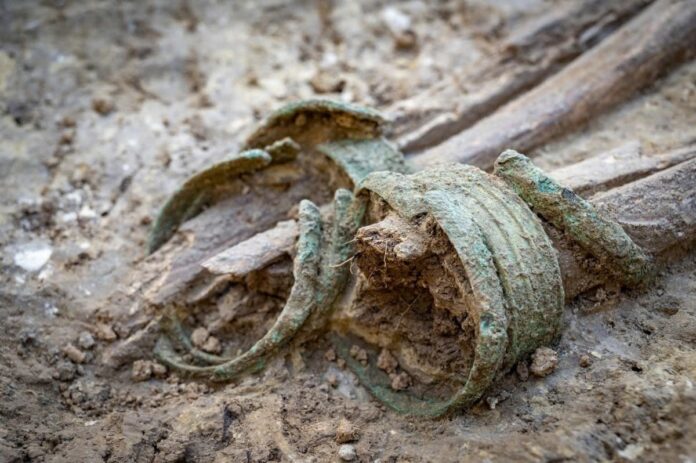Excavation Uncovers Three New Graves with Intriguing Artifacts
A Glimpse into Protohistoric Southern French Funerary Customs
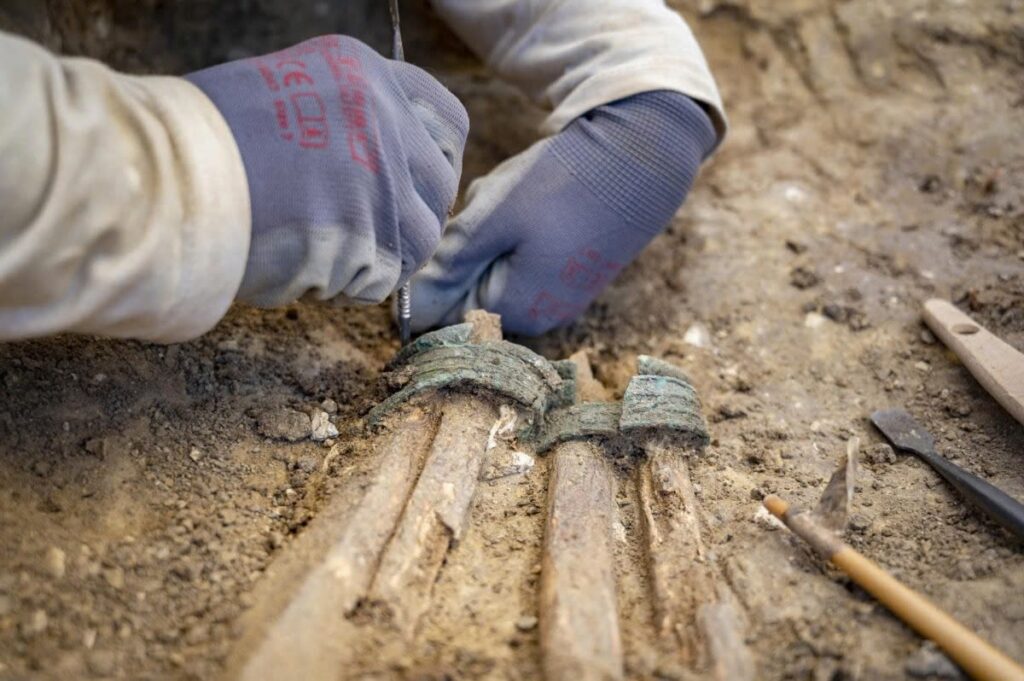
In a fascinating archaeological discovery, researchers have unearthed three new graves at an ancient necropolis in France, shedding light on burial practices during the transition from the late Bronze Age to the early Iron Age. The site, dating back to 900-600 B.C., has yielded a wealth of information about the funerary customs of our ancient ancestors.
The Tumulus: A Monumental Burial Structure
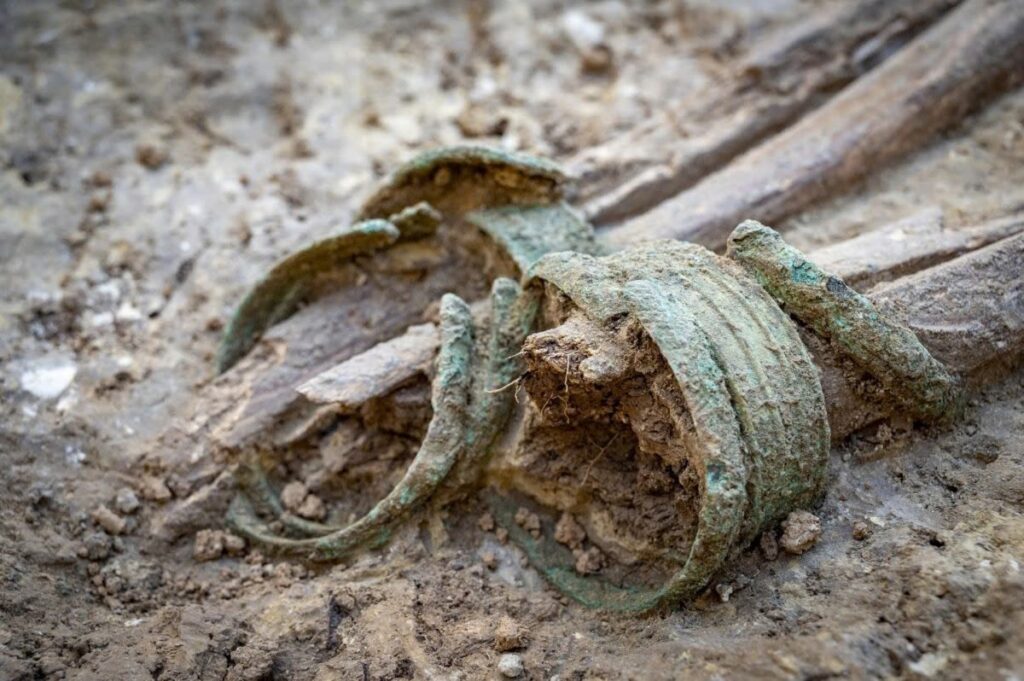
One of the most significant findings was a burial beneath a massive 33-foot-diameter tumulus. This impressive structure, surrounded by a deep ditch and likely once adorned with a ring of stones, speaks to the importance of the individual interred within. Curiously, despite the grandeur of the tumulus, the burial itself was unadorned.
Jewelry-Laden Burials: A Window into Bronze Age Fashion
The other two graves discovered this season paint a vivid picture of Bronze Age adornment. One contained the remains of an individual wearing a twisted copper alloy bracelet and a pearl and stone jewel, accompanied by two ceramic pots near the head.
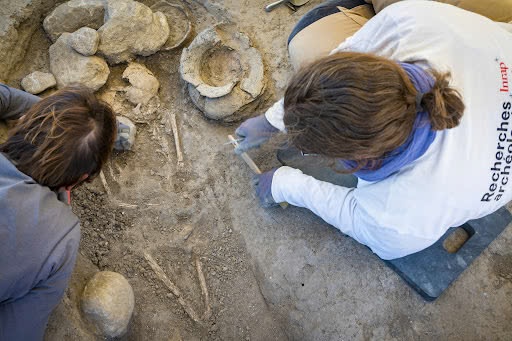
The second burial, however, was truly extraordinary. The deceased was found wearing a tubular torc around the neck, three ankle bangles, and three toe rings. This burial, the richest found at the site to date, also included a brooch and a large ceramic urn.
Spatial Organization: Boundaries Between the Living and the Dead
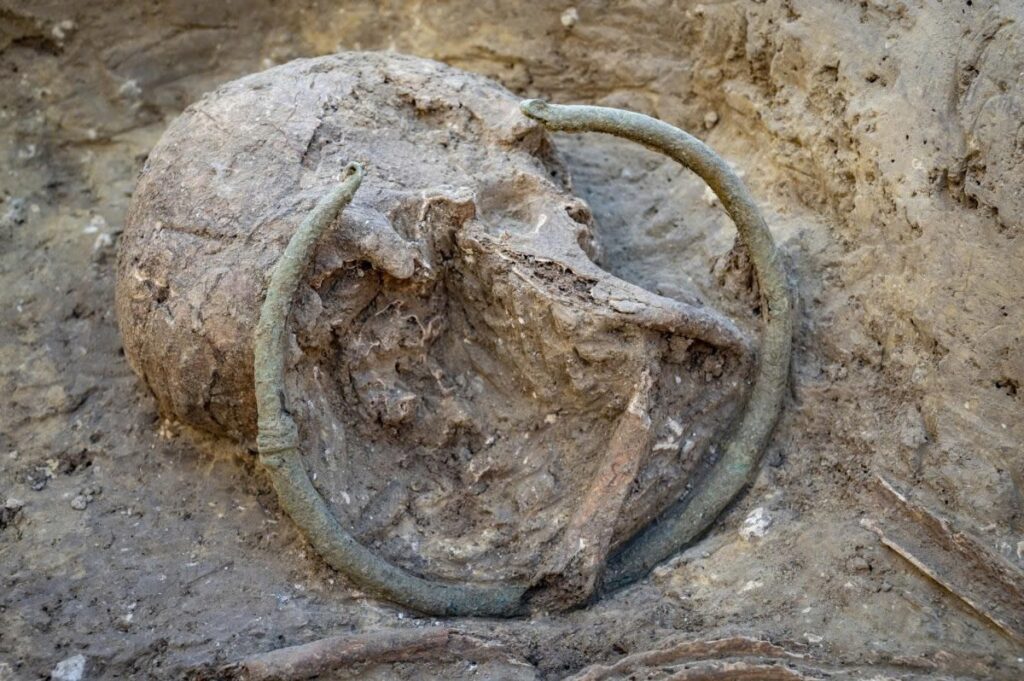
The excavation revealed intriguing details about how the ancient people organized their burial grounds. The tumulus and one of the inhumations were separated by a line of postholes, suggesting a linear structure that once marked the boundary between the world of the living and the dead. The second burial was defined by a six-foot-long alignment of stone blocks, further emphasizing the importance of spatial delineation in their funerary practices.
Expanding Our Understanding of Bronze Age Society
These new discoveries have greatly enhanced our understanding of protohistoric southern French funerary customs. They also suggest that the necropolis was far more extensive than previously believed, covering at least 1.3 hectares and possibly more.
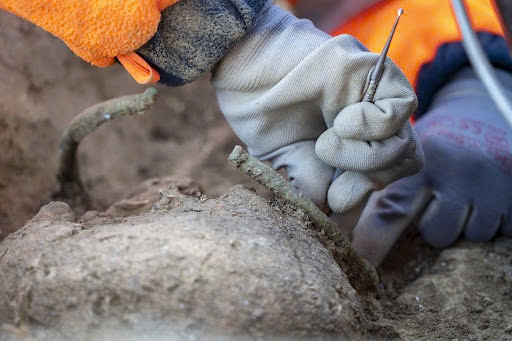
As archaeologists continue to unearth the secrets of this ancient burial ground, we gain invaluable insights into the lives, beliefs, and social structures of our Bronze Age ancestors. Each artifact and burial arrangement tells a story, helping us piece together the rich tapestry of human history.
